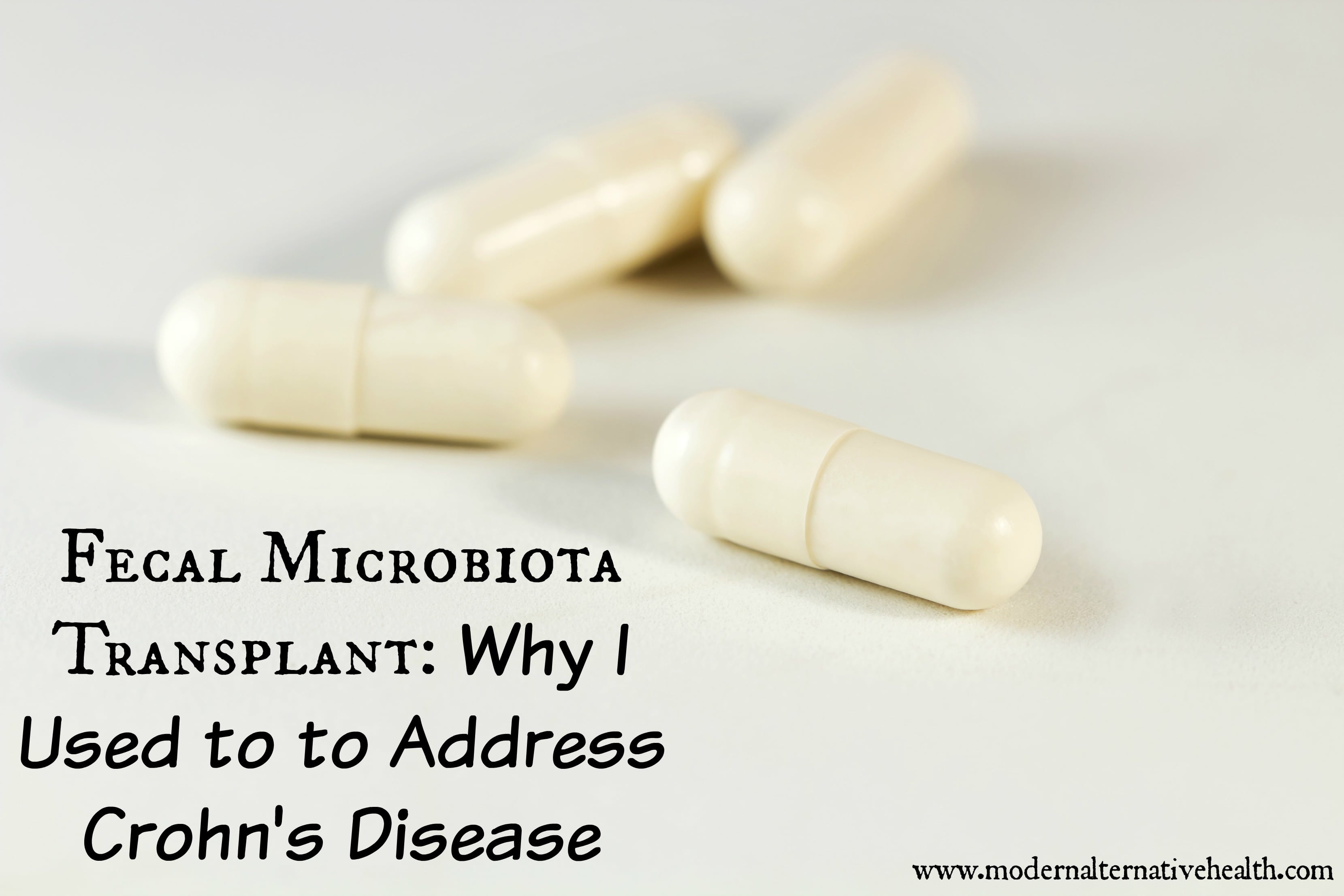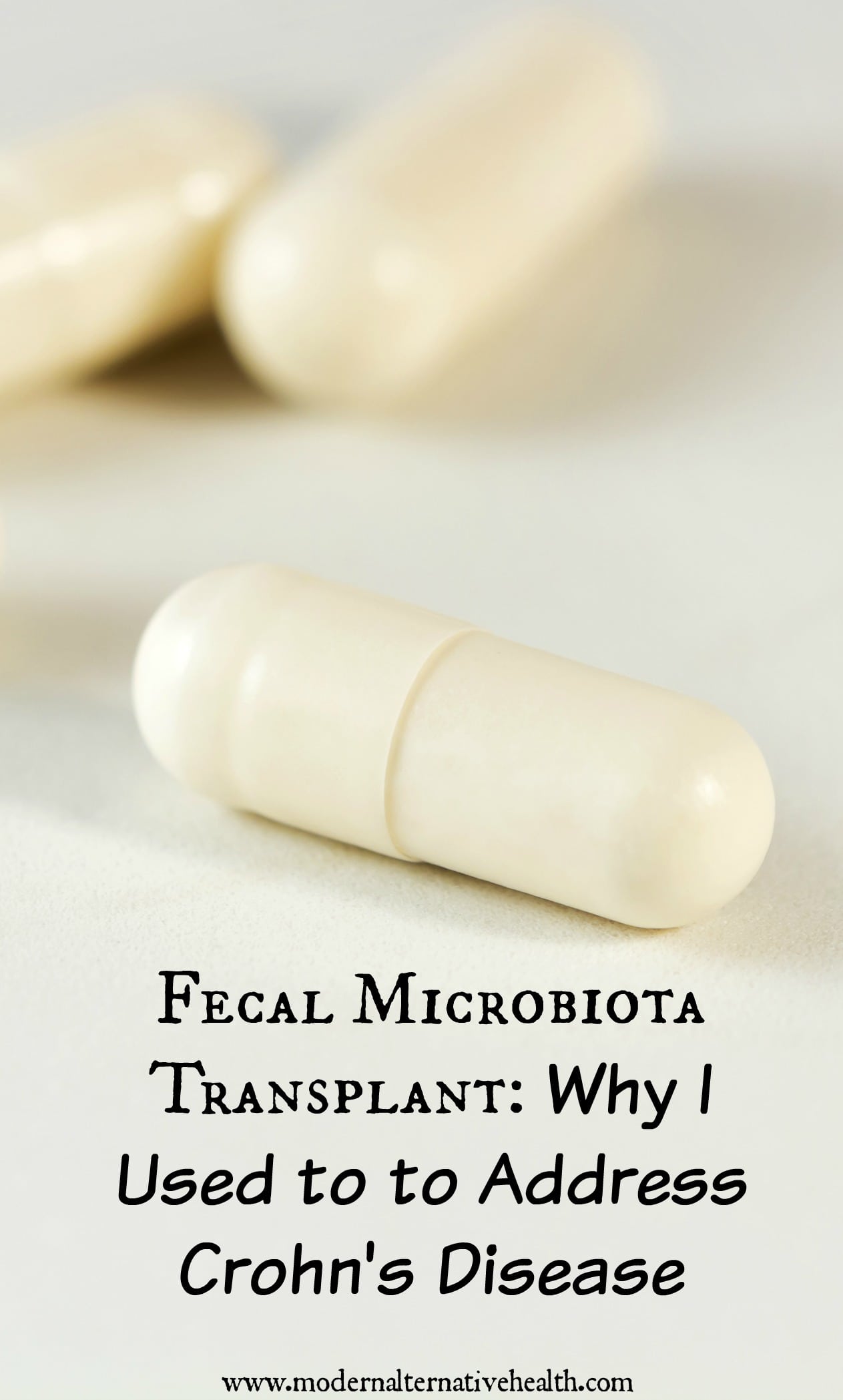
Today’s post is brought to you by a guest writer. She has had severe Crohn’s disease for several years, and after more common alternative treatments weren’t helping enough, she decided to try Fecal Microbiota Transplant (FMT) in hopes of healing. She’s sharing with you here what FMT is, and her experience with it.
By Merideth, Guest Writer
First of all, I know. EW! You want to do what with someone’s poop!
That is a normal reaction for a normally functioning person. However, if you are desperate to consistently be a fully functioning mom without severe pain, diarrhea, and vomiting to deal with, you might change your mind and be willing to do ANYTHING.
Here are the things I have done to treat symptoms of Crohns disease prior to FMT:
- Very strict paleo/GAPS type diet without any starchy vegetables (ie sweet potatoes) and no fruit except occasional berries
- At least a quart of bone broth per day
- Various supplements (including glutamine and parasite cleanses)
- A prescription mesalmine drug
- Lifestyle changes (reducing stress, more sleep, mindfulness)
- High dose probiotics (VSL 3, Garden of Life, Probiota)
- Redmond clay water daily
- Fermented foods ( kefir water, sauerkraut, and coconut milk yogurt)
All of this has helped. A LOT. I highly recommend trying some or all of these. However, I still flare occasionally and even at my best there is still a low level of inflammation.
What is Fecal Microbiota Transplant or FMT?
It is exactly what it sounds like. Take healthy donor poop and transplant it in the colon via NG tube, colonoscopy, enema, or dessicated powder capsules. For more information, check out the Powerofpoop.com.
Many people DIY FMT, but I decided this was not wise for me and I do not recommend it. (Note: A DIY FMT involves finding poop from a healthy donor, then preparing it with water as a slurry and usually doing the transplant with an enema bag. It’s messy and gross, and there’s also the need to make sure your donor is truly healthy. Adding poop from someone whose flora is possibly messed up could make things worse. If you want to attempt this, get appropriate tests done on your donor before trying it.)
Unfortunately, in this country, a patient can only get an FMT if they have a C Difficile infection or through a research study. I do not have C diff so I set about periodically checking ClinicalTrials.gov for research studies I might be eligible for. Side note: these studies are exploding right now so keep checking if you are interested!
The research study I found and enrolled in is based in San Francisco at UCSF. The parameters are one or two transplants via colonoscopy spaced at least one month apart. The participant can decide if one or two transplants are desired. There will also be a follow-up colonoscopy in nine months to assess efficacy. The transplant material was obtained through Openbiome.com. This is a very reputable company based in Massachusetts that provides the material for most of the C diff transplants in the U.S.

Preparing for FMT
In the three weeks prior to the transplant, I prepared by eating a strict diet of bone broth, meat, leafy vegetables, and lots of garlic (raw and cooked) and onions. I also did a two day water/tea fast the weekend before the transplant. My goal was to reduce my bacteria as much as possible so the new gut bacteria would “take.”
Through previous stool cultures I know that, despite my best efforts, I am still low on or completely missing certain healthy/beneficial bacteria and have too much dysbiotic bacteria. I also followed a normal colonoscopy protocol. This included a low residue diet three days prior, a clear liquid diet the day before, and a medication to completely empty all the waste out of my colon (good times!).
The Procedure and Results
The day of the procedure, the doctor showed me the transplant material. It was about the consistency and color of a frappucino—although I’m sure it didn’t smell like it. After sedating me, the doctor took several biopsies and found a few small lesions in my descending colon with a larger lesion in my transverse colon. The actual transplant (50-60 ml) was placed in the cecum, essentially the farthest you can go without hitting the small intestine. I was able to hold the transplant for about six hours, which the nurse said was a lot.
After the transplant, I haven’t noticed any symptomatic difference (boo!), but my poop definitely smells different. It’s in there, for sure! I have read it can take up to three months to fully get rid of a C-diff infection, so I will reserve full judgment until then.
I did recently have a short but severe flare. Normally, I am exhausted and doing the usual vomiting, diarrhea, pain thing, but this time I did not have the exhaustion and it was a much shorter flare than usual. I could *possibly* attribute that to the FMT. There is no way of really knowing.
My second transplant will occur in a few weeks, about two months after the first one. The jury is still out as to how much healing has occurred, but so far, it has not been the magic (poop) pill I was hoping for.


Can you update this with your results?
Have you heard about the capsules which are mde in Germany by a small company called Anthemi/Homo Novus?